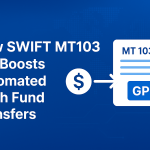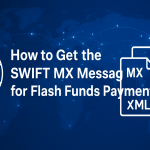Here’s a complete guide on message type (MT) used by banks with proper and updated informative research. In today’s global financial ecosystem, secure, standardized messaging between banks is foundational to effective international payments, settlements, and financial operations.
As a payment distributing company, it is vital we render a full knowledge of how some of the payments are resolved and distributed within the banking financial sector.
Being a trusted resource in cybernetworking and finance, RatnyxCyber recognizes adequately well the importance of understanding how banks communicate using globally accepted protocols like SWIFT MT and ISO 20022 MX.
The main sorts of bank messages are broken down in this article along with their classifications, structure, and changing function in cybersecurity and digital banking. Additionally, we will examine how the switch to ISO 20022 improves operational efficiency, transparency, and compliance.
What are Bank Message Types?
SWIFT message types are the format or schema used to send messages to financial institutions on the SWIFT network.
The original message types were developed by SWIFT, and a subset was retrospectively made into an ISO standard, ISO 15022.
It is only practiced within the system only member banks within the SWIFT network can communicate with each other using bank message types.
The most widely adopted system for such messages is the SWIFT network, which uses:
- MT (Message Type) formats—traditional, text-based messages.
- MX (ISO 20022) formats—modern, XML-based, and more structured.
Why Are These Bank Message Types Important?
Ensure interoperability across global financial systems, and support compliance with regulatory frameworks like AML, KYC, and FATF.
Enable real-time settlement, reconciliation, and reporting to facilitate secure, encrypted messaging via trusted networks like SWIFT and SPFS.
Let us break down the various message formats and what they serve as for banks and institutions.
Customer Payments and Cheques (MT 1xx)
These messages handle customer-level payments and cheque transactions. Bank Message Types: A Complete Guide BY RatnyxCyber
| MT Code | Function |
|---|---|
| MT 101 | Request for transfer between institutions. |
| MT 102 | Bulk customer credit transfers. |
| MT 103 | Single customer credit transfer (most common). |
| MT 104 | Direct debit collection instructions. |
| MT 199 | Free-format message for unstructured communication. |
Example Use Case: When a customer sends a wire transfer internationally, the bank uses MT 103 to send the instruction.
Financial Institution Transfers (MT 2xx)
These messages cover bank-to-bank (FI) transfers.
| MT Code | Function |
|---|---|
| MT 200 | FI Transfer for own account. |
| MT 201 | Multiple transfers to different banks. |
| MT 202 | Bank-to-bank payments. |
| MT 202 COV | Cover payment for MT103. |
| MT 299 | Free format message for FIs. |
Security Note: MT202 COV requires enhanced compliance due to its use in cover payments, sometimes exploited in fraud cases.
Forex & Derivatives (MT 3xx)
Used in foreign exchange (FX), money markets, and derivatives.
| MT Code | Function |
|---|---|
| MT 300 | FX Confirmation (spot, forward, swap). |
| MT 320 | Confirmation for interbank deposits/loans. |
| MT 350 | Interest payment details for loans. |
These messages are critical in interbank settlements and FX deals, often requiring high security and timely delivery.
Collections and Cash Letters (MT 4xx)
Facilitates document-based payments like bills of exchange.
| MT Code | Function |
|---|---|
| MT 400 | Advice of payment under collection. |
| MT 410 | Acknowledgement of collection instruction. |
| MT 430 | Amendment of instructions. |
| MT 499 | General free-format messaging in this category. |
Securities Markets (MT 5xx)
Handles trading, buying/selling of securities, and custody services.
| MT Code | Function |
|---|---|
| MT 500 | Instruction to buy/sell securities. |
| MT 515 | Confirmation to clients. |
| MT 535 | Statement of holdings. |
| MT 540–549 | Settlement instructions and confirmations. |
Used by banks, brokers, and custodians for investment operations.
Syndications and Metals (MT 6xx)
Specialized messages for precious metals and syndicated loans.
| MT Code | Function |
|---|---|
| MT 600 | Confirmation of precious metals trade. |
| MT 601–699 | Used for syndicated loan notifications and allocations. |
Documentary Credits and Guarantees (MT 7xx)
Supports trade finance operations, including Letters of Credit (LCs).
| MT Code | Function |
|---|---|
| MT 700 | Issuance of documentary credit. |
| MT 705 | Pre-advice of LC. |
| MT 707 | Amendment of LC. |
| MT 760 | Guarantee issuance. |
| MT 767 | Amendment of guarantee. |
Highly regulated due to their relevance in cross-border commerce and fraud prevention.
Cash Management and Travelers Cheques (MT 8xx)
Relates to standing orders, cash sweeps, and legacy cheque processing.
| MT Code | Function |
|---|---|
| MT 820 | Cash management transfer. |
| MT 830 | Standing order confirmation. |
Though decreasing in use, some legacy systems still rely on these.
Reporting Messages (MT 9xx)
Provides account balance and transaction reports.
| MT Code | Function |
|---|---|
| MT 900 | Debit confirmation. |
| MT 910 | Credit confirmation. |
| MT 940 | End-of-day statement. |
| MT 942 | Intraday transactions report. |
| MT 950 | Complete account statement. |
These are crucial for reconciliation and liquidity management.
Transition to ISO 20022: The Future of Bank Messaging
SWIFT is gradually phasing out MT messages in favor of ISO 20022, a richer, more flexible messaging standard.
You may also like to check out SWIFT MESSAGE TYPES EXPLAINED
Comparison: MT vs MX (ISO 20022)
| Aspect | MT Format | MX Format |
|---|---|---|
| Structure | Text-based | XML-based |
| Flexibility | Rigid | Extensible |
| Compliance | Limited metadata | Rich metadata |
| Example | MT103 | pacs.008 |
Final Thoughts on Bank Message Types: A Complete Guide BY RatnyxCyber
bank message types is more than a technical requirement—it’s a cornerstone of secure global finance. As institutions pivot toward ISO 20022 and real-time settlements, cybersecurity and interoperability become critical.
RatnyxCyber continues to be your guide in this transformation, helping institutions embrace structured messaging with confidence, compliance, and clarity.



